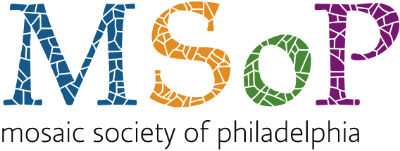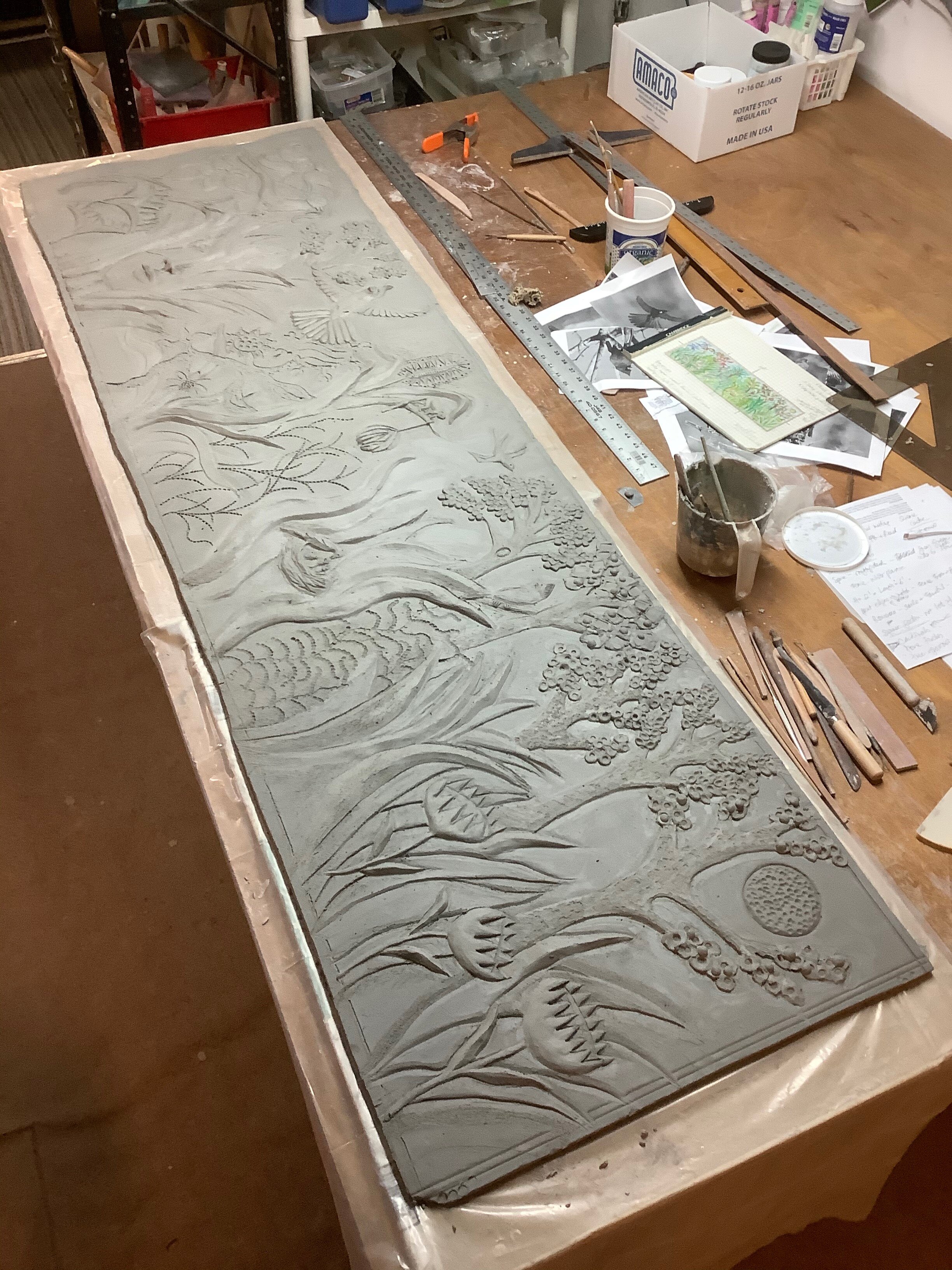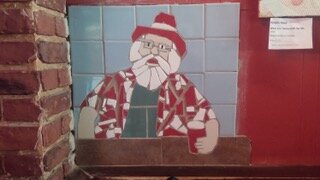By Amy Fleck
“Starving artist” is a term with which we are all familiar. It brings to mind someone whose artistic endeavors are so a part of who they are that the material world doesn’t really matter – mere squalor and hunger cannot not dissuade them from their beloved pursuits. While that is quite a romantic notion and would surely make for a good Netflix Original Series, most of us who have any kind of love of art or craft usually relegate our artistic activities to our free time. By and large, we all like to eat, live inside and have running water and electricity. As a result, art becomes an avocation while we work at paying jobs.
Jessica Liddell, owner of Bella Mosaic in the Mt. Airy section of Philadelphia, has found a way to maintain her creativity and use it to earn a living. Since 1997 Jessica has been making mosaic art professionally. The key it seems is to be creative about your creativity! Jessica doesn’t just make mosaic art and hope someone buys it; she has put together a business where clients seek her out for projects and she in turn steers the projects in a direction that satisfy what the client wants but give Jessica the ability to be true to her artistic vision for both the specific project as well as her own aesthetic sense.
I asked Jessica how she found her way to a career in mosaics. She had been, in her words, “obsessed with ceramics” since she was 16. Unlike today, where tiles are what she makes, she made a lot of pottery. Then, when she was 20, she took a break from school and went backpacking through Europe in hopes of figuring out what she wanted to do with her life since her original plan of being a teacher didn’t feel like it was going to be right for her. Enter Barcelona, Spain and its mosaics. Jessica has never looked back.
When Jessica returned to the United States she went to CCAC (California College of Art and Craft). There she took a class with well-known mosaic artist, Donna Billick. Besides learning about mosaics and tile making from Billick, Jessica also took to heart her advice to have something on the side to supplement your art. In Billick’s case it was owning real estate. While Jessica has dabbled in real estate, she has mostly been able to financially support herself (and eventually her family) with jobs that still allow her to be creative.
While being a full-time teacher wasn’t what Jessica decided on professionally, she has always taught. She has essentially become artist-in-residence at many schools, sometimes staying there for a whole school year. She works with the children to create mosaic works of art that are installed in the school. Jessica believes it is powerful to be creative and that there is so much value in having the children work collaboratively. Getting messy and manipulating materials is something special for many of these kids who are often more adept at computer and video game usage than working hands-on. She feels the mosaic projects she does with kids helps to exposes them to something new and lets the shine and connect with the world in a different way then they are used to. The finished projects give the children a sense of pride and community.
Besides teaching at schools, Jessica has also done corporate team building events. While these are adults and not children, the end products still result in pride and community connection. Jessica also believes the process of creating is beneficial in the corporate world. While participating in these projects the hierarchy of the corporate world falls away. People are working, communicating and learning together on level ground.
Jessica also runs classes/open studio time at Bella Mosaic. These are much less structured forays into creating mosaics. Originally, Jessica would run classes in 6-week intervals and then start over with a new group, but she found that her students really wanted more. That is how her current studio sessions came to be. People can do pay as you go drop-in classes at the studio; coming as often as they’d like. While informal, students still benefit from Jessica’s expertise as well as from collaborating with other students.
But wait! There’s more! In addition to all her teaching, Jessica creates her own mosaics. While she is open to whatever type of project her clients want, Jessica is often sought after for her large installation pieces. This type of work allows Jessica to tap into her creativity and love of tile making and mosaics. With the clients’ desires in mind, Jessica steers the projects so that she is able to satisfy them but also remain personally excited for the project. These installations give her the opportunity to try out or work on new techniques she’s interested in. Over the years, via networking and word of mouth (not to mention her amazing work, which speaks for itself), Jessica has not had too much trouble finding people and companies to commission her work.
Jessica’s artistic ability as well as her business acumen have set her apart from many artists. She has always found a way to turn passion into profit. She has been able to do so without having to compromise her vision of what she wants to create – an impressive and unusual accomplishment.
If you are interested in getting to know Jessica better or learning about mosaics, be sure to check out the offerings at Bella Mosaic.






































